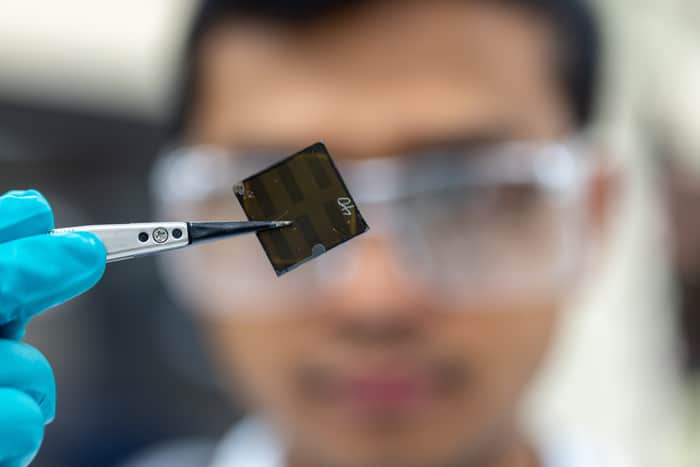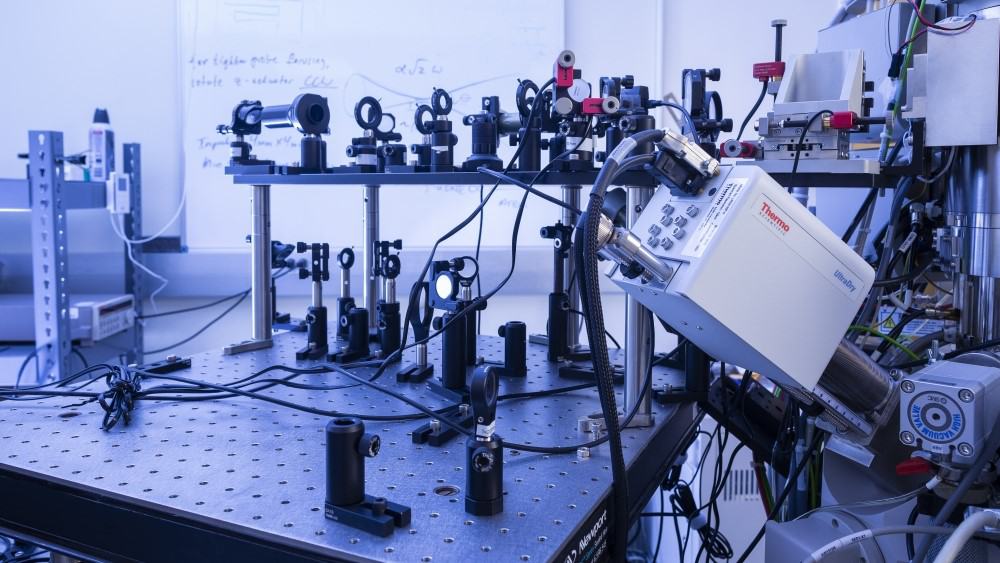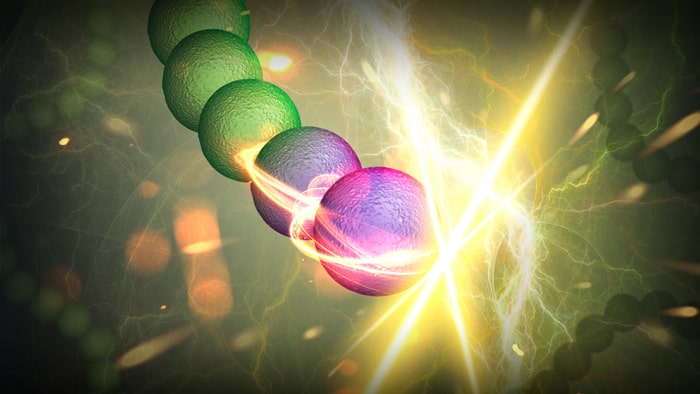
Materials and nanotechnology are thriving fields for physicists, who often benefit from collaborating with chemists, biologists, engineers and, of course, materials scientists. This makes materials and nanotechnology fascinating to write about, and this year has been no exception. Here is a selection of some of our favourite materials and nanotechnology research stories that we published in 2022.
The integration of nanomaterials with living organisms is a hot topic, which is why this research on “inherited nanobionics” is on our list. Ardemis Boghossian at EPFL in Switzerland and colleagues have shown that certain bacteria will take up single-walled carbon nanotubes (SWCNTs). What is more, when the bacteria cells split, the SWCNTs are distributed amongst the daughter cells. The team also found that bacteria containing SWCNTs produce a significantly more electricity when illuminated with light than do bacteria without nanotubes. As a result, the technique could be used to grow living solar cells, which as well as generating clean energy, also have a negative carbon footprint when it comes to manufacturing.
Much of the world’s cultural heritage exists in material form and scientists play important roles in preserving the past for future generations. In Switzerland and Germany researchers have used an advanced, non-invasive imaging technique to help restore medieval objects that are covered in zwischgold. This is a highly sophisticated material comprising an ultrathin gold layer that is backed by a thicker layer of silver. Zwischgold deteriorates over the centuries, but experts had been unsure of its original structure and how it changes with time, making restoration difficult. Now, a team led by Qing Wu at the University of Applied Sciences and Arts of Western Switzerland and Benjamin Watts at the Paul Scherrer Institute have used an advanced X-ray diffraction technique to show that zwischgold has a 30 nm-thick gold layer, compared to gold leaf, which is typically 140 nm. They also gained insights into how the material begins to separate from surfaces.

The term “wonder material” is probably overused, but here at Physics World we think it is an apt description of the perovskites – semiconductor materials with properties that make them suitable for making solar cells. However, perovskite devices have their downsides, some of which are related to surface defects and ion migration. These problems are exacerbated by heat and humidity – the very conditions that practical solar cells must endure. Now, Stefaan De Wolf at the King Abdullah University of Science and Technology in Saudi Arabia and colleagues have created a perovskite device made from 2D and 3D layers that is more resistant to heat and humidity. This is because the 2D layers act as a barrier, stopping both water and ion migration from affecting 3D parts of the device.
The conservation of angular momentum is a cornerstone of physics. This is why scientists had been puzzled over the fate of spin in some magnets, which appeared to vanish when the materials are bombarded by ultrashort laser pulses. Now, researchers at the University of Konstanz in Germany have found that this “lost” angular momentum is in fact transferred from electrons to vibrations of the material’s crystal lattice within a few hundred femtoseconds. Firing laser pulses at magnetic materials can be used to store and retrieve data, so understanding how angular momentum is transferred could lead to better storage systems. The Konstanz experiment could also lead to the development of new ways to manipulate spin – which could benefit the development of spintronic devices.

Speaking of wonder materials, 2022 was the year of cubic boron arsenide. This semiconductor had been predicted to have two technologically significant properties – high hole mobility and high thermal conductivity. Both of these predictions were confirmed experimentally this year and the researchers who did that are honoured in our Top 10 Breakthroughs of 2022. But it has not stopped there, later this year Usama Choudhry and colleagues at the University of California, Santa Barbara, and the University of Houston used scanning ultrafast electron microscopy to confirm that “hot” electrons in cubic boron arsenide have long lifetimes. This is another highly desirable property that could prove useful in the development of solar cells and light detectors.
It is estimated that 20% of all electricity used globally is expended on conventional vapour-compression refrigeration and air conditioning. Furthermore, the refrigerants used in these systems are powerful greenhouse gases that contribute significantly to global warming. As a result, scientists are trying to develop more environmentally friendly refrigeration systems. Now, Peng Wu and colleagues at Shanghai Tech University have created a solid-state caloric cooling system that uses electric fields, rather than the magnetic fields to create strain in a material. This is important because electric fields are much easier and much cheaper to implement than magnetic fields. What is more, the effect occurs at room temperature – which is an important requirement for a practical cooling system.
We are going to squeeze one more wonder material into this year’s round-up, and that is magic-angle graphene. This is created when layers of graphene are rotated relative to each other, creating a Moiré superlattice that has a range of properties that depend on the angle of the twist. Now, Jia Li and colleagues at Brown University in the US have used magic-angle graphene to create a material that exhibits both magnetism and superconductivity – properties that are usually at opposite ends of the spectrum in condensed-matter physics. The team interfaced magic-angle graphene with the 2D material tungsten diselenide. The complex interaction between the two materials allowed the researchers to transform graphene from a superconductor into a powerful ferromagnet. This achievement could give physicists a new way to study the interplay between these two usually separate phenomena.
